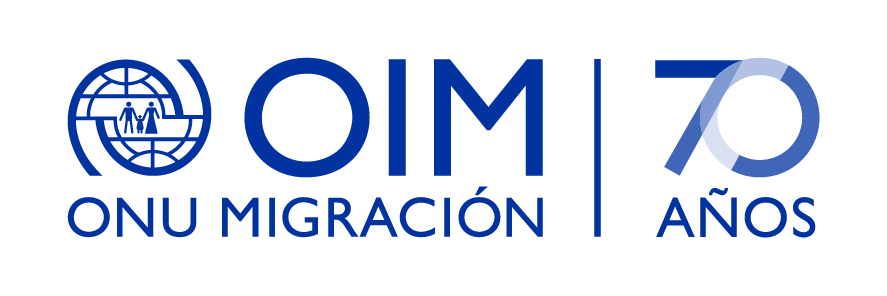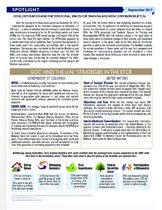| dc.coverage.spatial | Bogotá | spa |
| dc.creator | OIM | |
| dc.date.accessioned | 2017-10-26T23:04:32Z | |
| dc.date.available | 2017-10-26T23:04:32Z | |
| dc.date.created | 2017-09-01 | |
| dc.identifier.other | SpotlightIngles017/RPR | |
| dc.identifier.uri | http://hdl.handle.net/20.500.11788/1877 | |
| dc.description | Spotlight is a Monthly report about the most pertinent item related to the implementation of the peace accord. | spa |
| dc.description.abstract | After the signing of the final peace accord on November 24, 2016 – subsequently approved by the Colombian Congress on December 1st (“D-Day”) – a wave of individual decrees emerged a week later defining what would come to eventually be the 26 transitional points and zones (ZVTN) that the disarming FARC would occupy until August 15th of the current year. For those first eight months, the ZVTN were regulated by a clearly determined set of guidelines that maintained the occupants of these zones apart from surrounding communities, with a few specific exceptions. The process was monitored by the tripartite Monitoring and Verification Mission (MM&V) comprising members from the GoC, the FARC, and military international observers from the U.N. The principle
order of business was maintaining the ceasefire between the FARC and the GoC, and disarming the largest remaining guerrilla group in the Western Hemisphere.By June 27th, the United Nations had completely disarmed the rebels; by September 15th, the operations for extracting the remaining weapons caches had also drawn to a close. Between those two dates, on August 15th, the ZVTN converted into Territorial Spaces for Training and Reincorporation (ETCR). With the technical change in the legal status of these zones come fundamental changes in their purpose, and operational security concerns in the zones move to the fore, both for the former guerrillas as well as the surrounding communities. This Spotlight analyzes the current conditions in these zones and the near term prospects and challenges for reincorporating guerrillas and the inhabitants in these regions. | spa |
| dc.format.medium | Digital | spa |
| dc.language | en | |
| dc.publisher | Organización Internacional para las Migraciones (OIM-Misión Colombia) | |
| dc.rights | EL AUTOR, manifiesta que la obra objeto de la presente autorización es original y la realizó sin violar o usurpar derechos de autor de terceros, por lo tanto la obra es de exclusiva autoría y tiene la titularidad de los derechos morales sobre la misma. PARAGRAFO: En caso de presentarse cualquier reclamación o acción por parte de un tercero en cuanto a los derechos de autor sobre la obra en cuestión, EL AUTOR, asumirá toda la responsabilidad, y saldrá en defensa de los derechos aquí autorizados; para todos los efectos la OIM actúa como un tercero de buena fe. EL AUTOR, autoriza a LA ORGANIZACIÓN INTERNACIONAL PARA LAS MIGRACIONES, para que utilice la obra objeto de la presente autorización. | |
| dc.source | reponame:Repositorio de Información de la Organización Internacional para las Migraciones OIM | spa |
| dc.source | instname:Organización Internacional para las Migraciones (OIM) | spa |
| dc.subject | ETCR | spa |
| dc.subject | PEACE ACORD | spa |
| dc.title | REINCORPORATION AND THE TERRITORIAL SPACES FOR TRAINING AND REINCORPORATION (ETCR) | spa |
| dc.type | info:eu-repo/semantics/report | spa |
| dc.type.spa | Reportes | spa |
| dc.type.hasversion | info:eu-repo/semantics/publishedVersion | |
| dc.coverage.country | Colombia | |
| dc.description.objetivo | This Spotlight analyzes the current conditions in ETCR and the near term prospects and challenges for reincorporating guerrillas and the inhabitants in these regions. | spa |
| dc.rights.accesRights | info:eu-repo/semantics/openAccess | |
| dc.rights.acceso | Abierto (Texto Completo) | |

